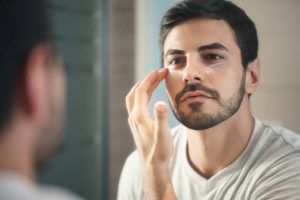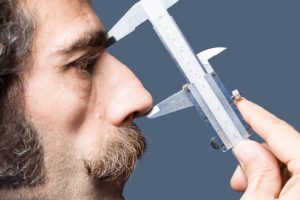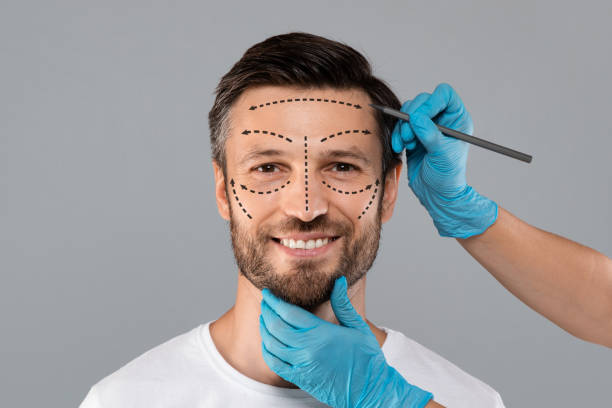Traditionally, the world of cosmetic surgery has been almost exclusively associated with the feminine domain. However, in the past couple of decades, the industry has witnessed a compelling shift. More and more men venture into the realm of cosmetic procedures, crafting an interesting and complex narrative about evolving beauty standards, culture, and perceptions of masculinity.
This changing landscape isn’t just noticeable, it is statistically backed. Take, for example, the information compiled by the American Society of Plastic Surgeons. Their data points towards a compelling trend – there’s been an upward surge of almost 29% in the number of men opting for cosmetic procedures since the year 2000. This emerging pattern is unlikely to slow down anytime soon and underscores an important cultural shift.
Cosmetic Surgery and the Reimagined Concept of Male Beauty
Contents

Historically, the concept of male beauty was tightly bound to a rugged, traditionally manly aesthetic. However, the idea of what’s attractive and desirable for men has morphed over time. The traditionally masculine look has expanded and become more nuanced. It now includes a more refined, youth-focused aesthetic that, while differing from the old paradigm, is no less masculine.
Much of this shift rests upon the pivotal role played by diverse forms of media and popular culture. These platforms amplify and disseminate images of impeccably groomed men, this cultivation of the ‘perfect man’ inevitably influencing people’s benchmarks for attractiveness.
Moreover, modern concepts of masculinity have loosened and evolved. They now accommodate and value an emphasis on meticulous grooming and skin care, things often traditionally labelled as feminine.
Unveiling the Most Coveted Cosmetic Procedures Among Men

The inclination among men to seek cosmetic procedures has spawned a lineup of popular surgeries specific to the male demographic. Rhinoplasty, commonly known as a nose job, liposuction, eyelid surgery, and gynecomastia treatment, a procedure for reducing male breast size, ranks high on men’s wish lists.
Each of these surgeries serves an aesthetic purpose – to enhance one’s self-assurance by refining one’s physical appearance, or to alleviate discomfort from any physiological irregularities.
Despite the recovery phase varying from procedure to procedure and person to person, men who undergo these surgeries can expect to resume their usual routine, on average, within about two to four weeks post-surgery.
Decoding the Factors Feeding the Trend

A blend of factors fuels the rising trend of males opting for cosmetic surgery. Greater societal acceptance of these procedures and a marked reduction in the taboo and stigma associated with men partaking in them feature prominently among these factors.
Additionally, we can’t overlook the role of professional competition. With youthfulness often associated with vitality and efficiency, the visible signs of ageing can put older professionals at a disadvantage. Thus, maintaining a youthful appearance becomes not only an aesthetic choice but a career-strategic one.
Are There Risks Involved?

As is common with any surgical procedure, cosmetic surgeries do pose potential causes for concern. Risks could vary from surgical complications like bleeding or infection to adverse reactions to anaesthesia, not to mention the potential for scarring and the possibility of needing additional surgeries.
Keeping these hazards in mind, any man contemplating a cosmetic procedure must prioritize consulting trusted and experienced professionals, thoroughly research their options, manage their expectations realistically, and make well-informed decisions.
Tracing the Impact

So, how is this burgeoning trend influencing broader societal norms and the cosmetic industry itself? The picture that emerges is complex – while on one hand, it shows an increased acceptance for men to actively seek improvement in their aesthetic appeal, on the other, it challenges the deeply ingrained societal norms that previously claimed men had no interest in such things.
With the persisting momentum of this trend, further research into innovative, male-specific procedures, and the cosmetic industry’s acclimation to cater to this market, more men are likely to benefit from these opportunities in the future.
The increase in demand for cosmetic surgery among men is not only statistically interesting, but it also provides us with a lens through which to view the shifting sociocultural norms and attitudes towards male beauty and masculinity. As we progressively shed the worn-out skin of archaic stereotypes relating to how men ‘should’ look or act, we leave behind us a more inclusive, expansive notion of self-expression, health, and personal well-being. A topic worthy of thoughtful discussion and insightful research.

